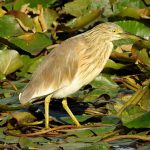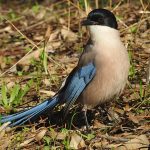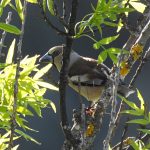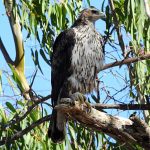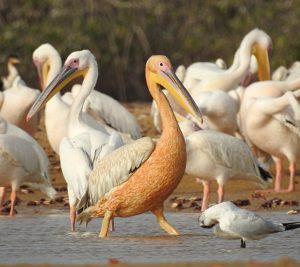
Although we normally work in Extremadura, Occasionally we organise trips to Africa to see birds in Senegal, a real paradise for ornithology. We usually focus on the western area because it is the best communicated: flights from Madrid are quite cheap and take little more than 4 hours. In this article I am going to describe the main areas and the main species of birds in Senegal that we will be able to observe. And if you feel like visiting the country, you can contact with Monsenegal or with me. We organise very complete tours and we adapt to your availability, both financially and time-wise.
Natural Area of Popenguine, birds of Senegal
The Popenguine area is very interesting, it is very close to the airport and we can see mainly birds associated with 3 types of ecosystems.
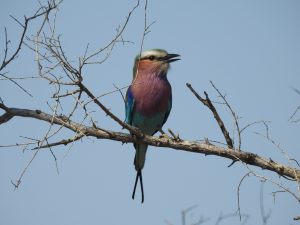
In this area we can observe many species of birds associated with marine environments. Here we highlight, among other species, the Grey headed gull Chroicocephalus cirrocephalus, Royal tern Thalasseus maximus and Eurasian whimbrel Numenius phaeopus.
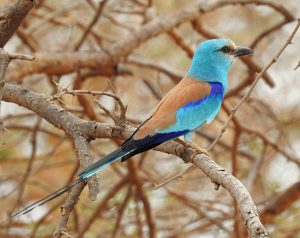
It is also possible to see tropical and forest birds such as the Lilac breasted roller Coracias caudatus, African grey hornbill Lophoceros nasutus and Common bulbul Pycnonotus barbatus. In the areas further away from the coast we can also see typical birds of the savannah such as the European roller Coracias garrulus, Abyssinian roller Coracias abyssinica and Beautiful sunbird Cinnyris pulchellus.

It is important to note that many European birds come here in winter, in search of suitable ecosystems and a milder climate. Finally, I would also like to highlight the group of birds of prey, as here we will be able to see such interesting species as the Bateleur Terathopius ecaudatus, Red footed falcon Falco vespertinus, Lanner falcon Falco biarmicus, Osprey Pandion haliaetus, Lesser kestrel Falco naumanni or Black kite Milvus migrans. Some specimens of the latter 3 species return to the Iberian Peninsula in spring to breed in our territory.
Somone lagoon
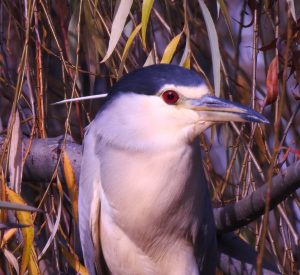
A little more than half an hour from Popenguine is the Somone Lagoon. An incredible ecosystem in which the Somone river flows into the Atlantic Ocean. Here we can observe large aquatic and marine birds such as the Great-white and Pink-backed pelicans Pelecanus onocrotalus y Pelecanus rufescens, Greater flamingo Phoenicopterus roseus, Abdim’s stork Ciconia abdimii and African spoonbill Platalea alba. Also we can see another “European” birds such as the Grey heron Ardea cinerea or the Night heron Nycticorax nycticorax.
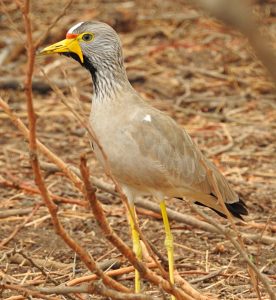
On the other hand, we will also be able to see smaller birds of Senegal such as the African wattled lapwing Vanellus senegallus and the Eurasian whimbrel Numenius phaeopus, as well as birds common in Europe such as the Dunlin Calidris alpina and the Common ringed plover Charadrius hiaticula.
The combination of fresh and salt water makes it a very food-rich ecosystem, where many European birds hibernate but it is also used as a breeding ground for many other African birds. The european roller Coracias garrulus and the Eurasian bee eater Merops apiaster are also two beautiful birds whose populations here are abundant.
Saloum river, birds of Senegal
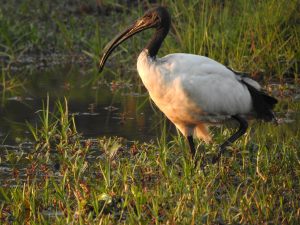
Saloum river is another of the best areas in Senegal for birdwatching. The Delta of this river is one of the most biodiverse areas in Senegal, combining mangroves, marshes, islands, savannahs and dry forests, making it a birding paradise. It is also listed as a Ramsar site and is a hotspot for migratory and resident African birds. In addition, there are areas of the river upstream of the delta where we can also see a great biodiversity of fauna. For example, the area around Ndiaffate is a very interesting place.
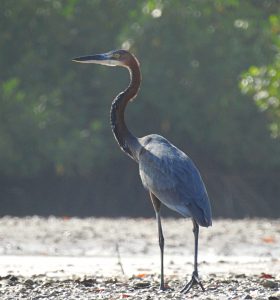
Apart from the birds mentioned in the previous points, we will also be able to see here the Asian woolly necked stork Ciconia episcopus, Dimorphic egret Egretta dimorpha, Sacred ibis Threskiornis aethiopicus or Curlew sandpiper Calidris ferruginea. It is also the habitat of Verreaux’s eagle-owl Bubo lacteus, Africa’s largest owl species. Blue cheeked bee eater Merops persicus, Violet turaco Musophaga violacea or the Eastern golden weaver Ploceus subaureus are other really beautiful birds that can be seen in the forests near Saloum river. Finally, I would like to mention the bird island, near Toubakouta. It is a great place to observe hundreds of birds, which can be reached by traditional canoe.
Toubakouta and Village forest
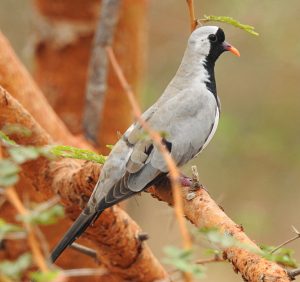
Within the Saloum Delta National Park we can also access very interesting forest areas. In the vicinity of toubakouta is the Village forest, a mixed forest ecosystem in which mangroves, savannahs and dry forests can be found. In addition to the aforementioned birds of prey, here we can see many others such as Palm nut vulture Gypohierax angolensis and Black winged kite Elanus caeruleus, also present in the Iberian Peninsula.
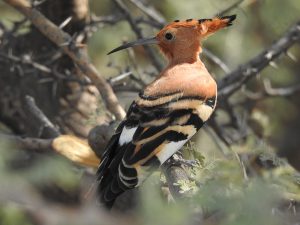
On the other hand, we will be able to see very striking birds such as Namaqua dove Oena capensis and Lilac breasted roller Coracias caudata, the red throated bee eater Merops bulocki, Blue checked bee eater Merops persicus White throated bee eater Merops albicollis and African hoopoe Upupa africana. Passerines like Southern masked weaver Ploceus velatus. Copper sunbird Cinnyris cupreus Splendid sunbird Cinnyris coccinigastrus or Splendid starling Lamprotornis splendidus are also common in these areas. Double spurred spurfowl Pternistis bicalcaratus is another of the most valuable species in the area.
Palmarín Natural Reserve
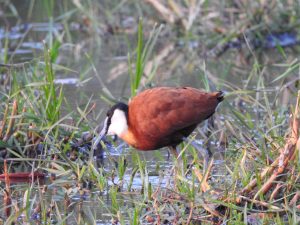
The Palmarin area is a combination of mangroves, lagoons, marshes, savannahs and beaches. This mosaic of ecosystems makes it one of the best areas to see birds in Senegal. As for birds associated with the aquatic environment, we can see practically all the birds mentioned in this article. Also we can find African jacana Actophilornis africanus and other “European” species such as Purple heron Ardea purpurea and Common greenshank Tringa nebularia.
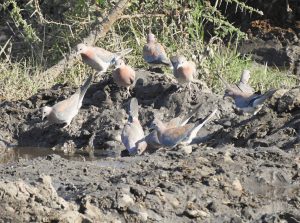
Falco rufipennis is a bird of prey we had not yet discussed. It is very rare in Africa, but here it finds a favourable habitat. Laughing dove Streptopelia senegalensis is very common in the area. It is a very curious species for us as it reminds us of the European turtle dove and the Eurasian collared dove at the same time, showing similarities with both species.
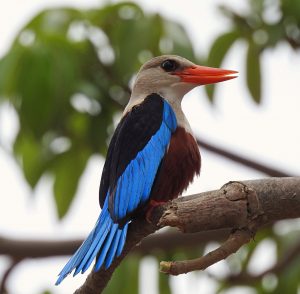
Senegal is an excellent wintering ground for many European species. But it is also a permanent habitat for many sedentary species of the western Sahel, some of them endemic.
In short, if you want to enjoy an unforgettable experience, both from an ornithological, scenic and culinary point of view, Senegal is one of the best countries in Africa to do so. I hope you’ll take the plunge one day and enjoy it.


